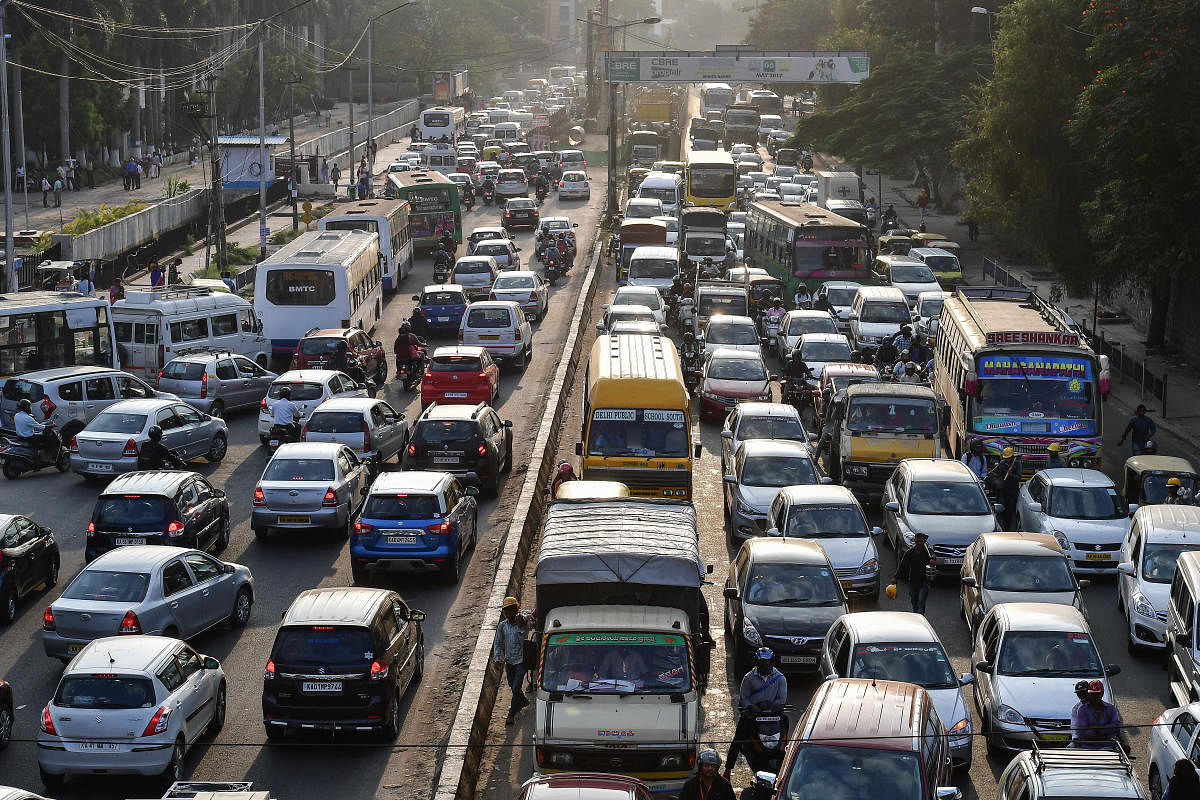
The remarkable growth of vehicular traffic in India during the last two decades has resulted in traffic congestion, pollution, longer journey time and increased road accidents.
This is due to rapid urbanization and growth of industry, commerce and employment in urban areas, especially cities. Over this period, thousands of vehicles have been added to our roads every day without a proportionate improvement in infrastructure. Today, Indian metros like New Delhi, Mumbai, Kolkata, Chennai, Bengaluru and Hyderabad have nearly 25 million vehicles between them.
This unprecedented growth in traffic without corresponding improvement in road infrastructure has resulted in severe problems such as pollution, congestion, accidents, encroachments, traffic bottlenecks, etc. To add to the problem, the civic agencies involved in traffic management are finding it extremely difficult to cope with such a huge traffic problem due to inadequate physical and financial resources.
Each year, nearly 1.5 lakh people die as a result of road accidents and about five lakh more are injured or disabled on Indian roads. This is higher than deaths due to natural calamities or any contagious disease. Most victims of road accidents are vulnerable road users like pedestrians, cyclists and two-wheeler riders. In most cases, people killed and injured are men in the age group of 15–45 years, the productive age in any economy. The deaths result in loss of precious human resources for the country and total disaster for the families of the victims.
To manage traffic optimally on Indian roads and ensure greater safety, there is a need to evolve effective measures in the form of institutional and legal changes. The changes should have positive impact on traditional components of traffic management and road safety -- traffic and road engineering; enforcement and compliance of traffic laws and rules; traffic and road safety education and awareness; and, trauma care and emergency services.
The Motor Vehicles Act 1988 is the existing legal and regulatory mechanism for road transport and traffic management in the country. It was enacted when the number of vehicles on our roads was far fewer and technology was primitive. Over the last 30 years, there has been a manifold increase in the number of vehicles and also infusion of advanced technology.
Realizing this, the Government of India constituted more than a decade ago the ‘Sundar Committee’ to suggest changes to the Motor Vehicles Act. This resulted in the Motor Vehicles (Amendment) Bill which, if passed by Parliament, will help ensure greater discipline on our roads. The most prominent amendments suggested are:
Enhancement of punishment for rule violations by drivers. For example, the penalty for drunken driving is proposed to be enhanced from Rs 2500 to a minimum of Rs 10,000; that for dangerous driving would be Rs 5,000 and/or imprisonment up to one year; for over-speeding, the penalty is to be Rs 5,000. Such deterrence and heavy penalties, if enforced properly, will definitely lead to better compliance of traffic rules.
A penalty for faulty road design, engineering and maintenance: For the first time, road contractors, consultants and concessionaires will be held accountable for faulty road design, construction and maintenance of roads.
It is proposed to enhance penalty on manufacturers of motor vehicles for any defect or for not adhering to standards.
Additional safety for school children in the form of safety belt and protective headgear.
Transparency is key
The enhancement of traffic fines may lead to enhanced compliance by road users, but at the same time there is scope for increase in corruption and harassment by enforcement agencies.
So, the amendments provide for electronic monitoring and enforcement of road safety. The manual challaning system should be replaced by automated traffic challaning system.
The existing traffic enforcement system has the following shortcomings:
Manual booking of traffic violation cases consumes time and energy.
That time and energy detracts traffic police officers from giving adequate time to traffic regulation and clearing traffic jams.
Manual system of booking of traffic violations is not transparent. It facilitates corruption.
In manual system, there is no record of previous traffic violations by drivers, and hence no way to punish repeat offenders with higher penalties.
There is scope for pilferage and misappropriation of fines collected by traffic police. Many a time, unscrupulous police officers use duplicate receipt books.
To bring transparency in challaning traffic offenders, Bengaluru Traffic Police started the Enforcement Automation Centre in 2002. In Mysore, the Automated Traffic Challaning System was introduced in 2013. In this system, violation of traffic rules by road users is captured on cameras and computerized challans are sent to the owners of vehicles. It serves to reduce police-public interface and thus bribery and pilferage, too.
For the enhanced penalties in the amended Motor Vehicle Act to be effective in bringing about better discipline on our roads, the Automated Traffic Challaning System must be adopted in all cities and towns as an effective e-governance tool in managing and monitoring traffic and road safety-related issues across the country.
(The writer is Additional Director General of Police, Crime and Technical Services, Bengaluru)